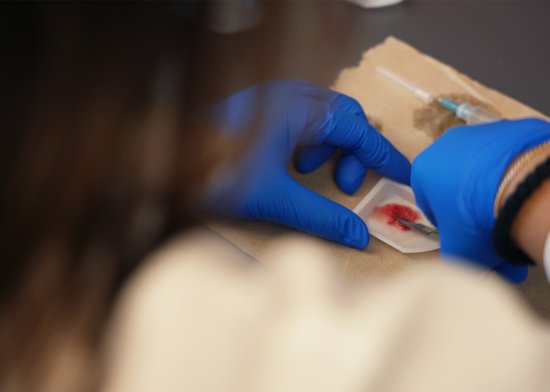
Researchers found that the COVID-19 virus triggers immune changes that may one day be harnessed to help fight cancer.
Viruses don’t often come with silver linings, and infections don’t generally lead to positive health effects. But during the pandemic, some doctors anecdotally began noticing that some people with cancer who got very sick with COVID-19 saw their tumors shrink or grow more slowly.
“We didn’t know if it was real, because these patients were so sick,” says Dr. Ankit Bharat, chief of thoracic surgery at Northwestern University. “Was it because the immune system was so triggered by COVID-19 that it also started to kill cancer cells? What was it?”
[time-brightcove not-tgx=”true”]Bharat and his team decided conduct a study to find out if the seeming “benefit” of COVID-19 for these cancer patients could teach them anything about a potential new way to fight cancer—or if it was simply a red herring. They published their findings Nov. 15 in the Journal of Clinical Investigation.
Using a combination of human cells and animal models, Bharat and his team found that in the presence of SARS-CoV-2, immune cells called monocytes act differently than they normally do. Typically, monocytes, as part of the immune system, cruise the bloodstream and alert other immune cells to the presence of foreign cells or pathogens; some monocytes can attract cancer-killing immune cells to tumors, but others aren’t as effective in doing so. That’s because in some cases, cancer cells can co-opt monocytes —“like a demon summoning forces,” says Bharat—and form an immune wall protecting the tumor from being discovered and attacked by additional immune defenses.
But during a COVID-19 infection, SARS-CoV-2 attaches itself to these monocytes, and by doing so reverts them back to doing their original job: defending the body against cancer. “They look the same, and are still recruited to the tumor sites, but instead of protecting the cancer cells, they start to bring specific natural killer cells—which are the body’s main cells that kill cancer—to these tumor sites,” says Bharat. “So where before the cancer was brainwashing the monocytes into protecting the cancer, the virus now helps them to attack cancer.”
Read More: What It’s Like to Have Long COVID As a Kid
It’s a potentially powerful turnabout that—if confirmed by human studies—could represent a new way to control cancer. By analyzing the receptor on the monocytes that the COVID-19 virus attached to, Bharat found a compound that currently isn’t used to treat any disease but is a close mimic of the COVID-19 virus in the way that it binds to the monocyte to induce the cell’s transformation into a cancer-fighting cell. “We can use a drug to cause the same effect that the RNA of the COVID-19 virus was doing,” he says. “By manipulating that pathway through the drug, we might be able to help patients with many different types of cancers, particularly those with stage 4 cancers.”
In animal tests, the compound—called muramyl dipeptide (MDP)—reduced tumors by 60% to 70% in mice with human cancers including breast, colon, lung, and melanoma.
More studies are needed to confirm whether the cells have the same cancer-fighting effect in people, but there are promising hints. These transformed, cancer-flagging monocytes, called inducible non-classical monocytes, are rare compared to other types of monocytes, but tend to proliferate when inflammation occurs, such as during a COVID-19 infection. Transplant surgeons have previously identified them in people who have had lung and spleen transplants, and Bharat is conducting additional research to understand why the transplant process and COVID-19 infections—both of which activate the immune system—trigger the specific change in the monocytes. Interestingly, the transformation doesn’t occur with all RNA-based viruses; Bharat tested influenza and parainfluenza, which are also RNA viruses, and failed to see the same population of cancer-fighting monocytes emerge.
Another intriguing part of the equation, says Bharat, is that this pathway is independent of the T cell immune treatments that are becoming a big part of cancer therapy now, in which doctors boost the population of T cells that can recognize and attack cancer cells. They can be effective, but generally only work for a while, since cancers quickly find ways to circumvent the T cells and become resistant to the therapies.
The virus-induced changes in the monocytes, in contrast, aren’t dependent on T cells. Bharat tested the approach in mice genetically bred to lack T cells and still saw a strong effect on tumors in these animals from the monocytes. That means that the monocytes may help shore up the body’s response to immunotherapy—and its ability to fight tumors. Much more research is needed before the finding leads to any treatments. But “this approach could potentially be used to promote regression,” he says.